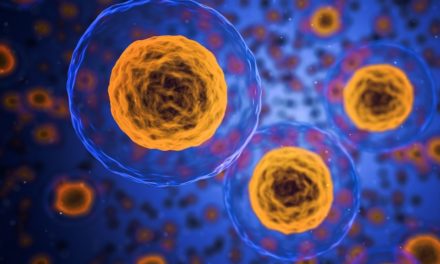This article on DMT studies is by guest contributor John Chavez of DMT Quest
DMT is an abbreviation for the chemical dimethyltryptamine. This compound is most well known for its hallucinogenic properties and transformative effects following inhalation. The popularity of discussion surrounding DMT has continued to grow following the release of Dr. Rick Strassman’s book and documentary titled DMT: The Spirit Molecule over a decade ago. In the book, Strassman documents his journey regarding DMT research he did at the University of New Mexico in the early 1990’s. He would also publish some of his hypotheses regarding the role of DMT in inducing mystical experiences, as well as its origin within the mammalian body. In more recent times, former heavyweight boxing champion Mike Tyson has created a new surge of interest in DMT following an ESPN interview discussing his experiences following ingestion of 5-MEO-DMT (another type of DMT hallucinogen.)
In June 2019, a research team at the University of Michigan published their findings from a study measuring endogenous DMT in the journal Scientific Reports. The definition of the word endogenous means “to originate within an organism.” Unlike the visionary states induced by hallucinogens such as LSD, “magic mushrooms,” or Ayahuasca, DMT (and 5-MEO-DMT) do not need to be ingested in order to occur within the human body. DMT occurs naturally within humans, a fact that’s been known by the scientific community since the 1970’s. It was initially thought that DMT was the likely biochemical culprit for brain disorders relating to hallucinations, but inconsistent lab measurements in patients and control groups led this hypothesis to be discarded.
Over the past several decades, conflicting data and discord within the scientific community regarding endogenous DMT led some to question whether this compound was even capable of being produced in the human brain. The predominant theory of many scientists was that the lungs acted as the dominant source of DMT in the human body. The recent DMT studies at the University of Michigan, led by neuroscientist Dr. Jimo Borjigin, would change the discussion altogether. Researchers found that the circulating brain levels of DMT in normal, waking experimental animals (rats) to be within the same levels as the common neurotransmitters serotonin, dopamine, and norepinephrine. The study also measured whether the human brain contains the same two enzymes (in vitro) necessary to make DMT in the manner that experimental animals did (in vivo). The research team found that the human brain does in fact contain these same two enzymes (INMT/AADC). When asked whether this recent animal study proves that humans produce DMT in the brain, Dr. Borjigin stated, “All reasonable people would agree that if human brains are found to express both enzymes, it is highly likely that DMT is made in the human brain.”
When asked whether there is any evidence to suggest that rats produce any biochemicals that humans do not produce, Dr. Borjigin stated, “Usually when you go up the evolutionary tree, it is higher order animals such as humans that have something that rats don’t have and it doesn’t go the other way around. Especially being that both rats and humans are mammals. So my answer is no, not as far as I know. There are genes and proteins found in humans, but not mice or rats but not the other way around.”
The implications of these DMT studies are far-reaching, being that much of the speculation regarding endogenous DMT has long been focused on visionary states such as near-death experiences (NDE’s), mystical experiences from meditation, and dreaming. However, this recent data alludes to the likelihood that DMT plays a key role in normal human consciousness and our perception of reality.
DMT and Near-Death Experiences
While this recent study did not shine any light on DMT’s relationship to near-death experiences (NDE’s), previous studies have suggested that it may play an important role. A 2015 study measured changes in the levels of neurotransmitter release in the brain prior, during, and immediately following cardiac arrest. In this study, researchers observed increases of the neurotransmitter serotonin by as much as 7,000% in the brain immediately following the moment of death. Similar dramatic increases were observed for numerous other neurotransmitters. Based on the data of the recent DMT studies showcasing similar levels to common neurotransmitters, it would seemingly be a reasonable hypothesis that DMT likely plays a role in modulating a NDE.
In the recent University of Michigan DMT study, researchers observed a nearly 300% increase of DMT in the visual cortex 15 to 30 minutes following cardiac arrest. While many interpret these findings as proof that the visions induced during near death experiences are likely generated by an increase of DMT in the brain, Dr. Borjigin states, “Some interpret our data as DMT being linked to NDE’s which is not my intention or the goal of the study; but clearly a lot of people are interested in the study because of that potential link. However, for DMT-NDE to be linked, we would have to do the same exact study we did in our 2015 PNAS paper where we monitored neurotransmitter release at 60 second intervals and measured the amounts of neurotransmitters released… and it was a huge amount.”
Brain Waves
Electroencephalography (EEG) measurement records the oscillations (brain waves) of brain electric potentials acquired from electrodes placed on the scalp. Brain waves are generally believed to coincide with different states of alertness and awareness. The different types of brain waves are as follows (listed from slowest to fastest): delta, theta, alpha, beta, and gamma. Delta is the range observed during non-dream sleep while theta is correlated with deep meditation and hypnosis. Alpha is generally considered to be predominant during relaxation while beta is the dominant brain wave pattern observed during normal wakefulness and alertness. Gamma is considered to involve increased processing speed and a greater level of awareness.
In 2013, Dr. Borjigin and her research team would perform the first EEG study of brain activity during the moment of death. Up until this time, much of the scientific community hypothesized that brain activity would be markedly suppressed during cardiac arrest. However, this study produced surprising results that observed a significant surge of gamma waves 30 seconds following cardiac arrest that were global, highly coherent, and at levels exceeding waking consciousness.
While not directly related, there has also been a consistent observation of increased gamma wave measurement following the ingestion of LSD, psilocybin, ayahuasca, DMT, and 5-MEO-DMT. Additional data observing increased gamma wave activity during REM sleep (dreaming), meditation, electrically induced lucid dreaming, and hypnosis has also been generated by independent researchers. This has led to speculation that gamma waves provide a potential oscillatory correlate to endogenous DMT upregulation in the brain. When asked about the correlation of endogenous DMT and gamma wave increase, Dr. Borjigin stated, “It’s possible. I guess until we do the experiment we’re not sure, we don’t know. There’s a possibility that those two are linked. We could test it by doing an EEG of an animal specifically bred to be completely deficient in DMT and check to see if gamma waves are altered.”
So what to make of all this information?
If DMT is created within the human brain at the same level as common neurotransmitters and DMT is undeniably a powerful hallucinogen, does that mean that our perception is inherently illusory?
One might postulate that if a person were to ingest magic mushrooms or LSD, the subsequent effects of the chemicals would induce illusions of “things happening” that aren’t truly happening. But what does this mean in light of the brain producing its own psychedelic compound on a constant basis? Neuroscientist Dr. Anil Seth has a popular TED talk on YouTube titled, “Your Brain Hallucinates Your Conscious Reality.” In this presentation, Seth gives examples in which humans utilize patterns of recognition to form a perception of reality. He stated, “We don’t just passively perceive the world, we actively generate it. The world we experience comes as much if not more from the inside out as from the outside in.” This recent study produced by the University of Michigan seems to have provided a biochemical basis for Dr. Seth’s notion that the “brain hallucinates conscious reality.”
If reality is indeed a “hallucination,” perhaps the visions reported from near-death experiences are as real as anything else humans perceive during “normal” states of perception. Further research must take place in order to better understand the nature of reality and DMT’s role in it. Dr. Borjigin and her team are leading the charge in terms of exploring the biological correlates of extreme moments of perception. Unfortunately, NIH funding has been scarce for this field of research. It’s unfortunate, as these DMT studies generate compelling data to help provide nothing less than a framework for the underlying truth of reality. If you’re interested in helping her research ventures and providing financial support to these extremely interesting studies, you can do so by donating directly to her lab here.












